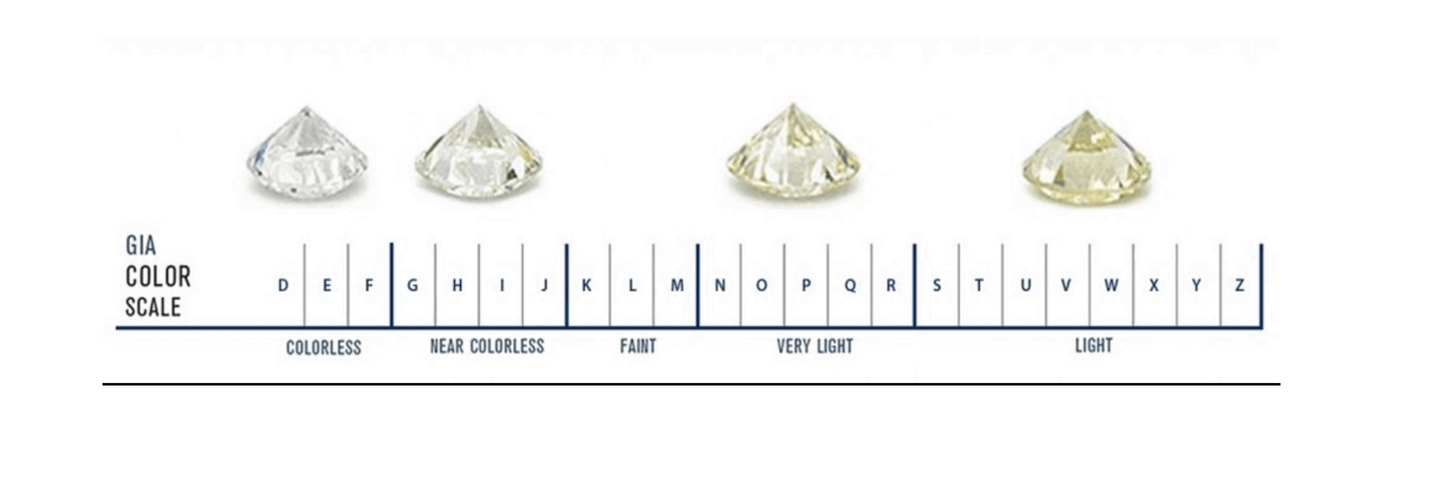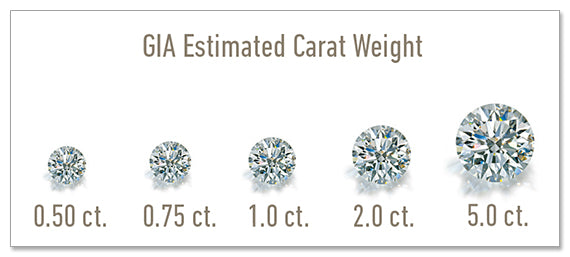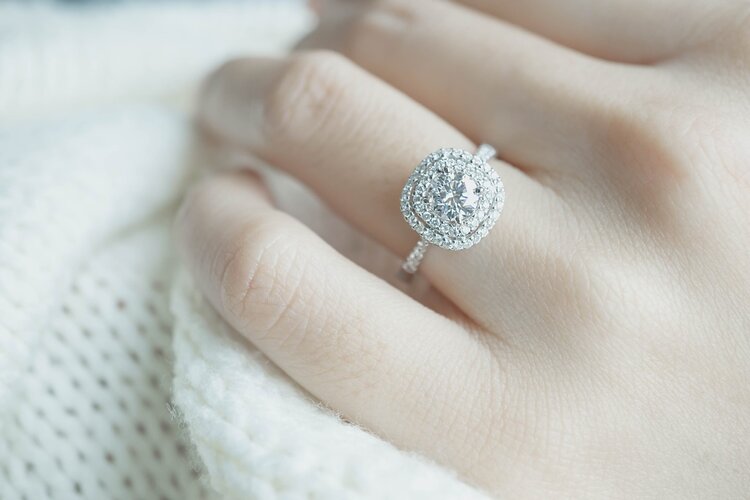This store requires javascript to be enabled for some features to work correctly.
THE FOUR C'S OF DIAMONDS
CUT
Many people confuse cut with the shape of a diamond. The shape you select is a matter of individual taste, and today your choice is only limited by the skill and imagination of the craftsman. The cut is the most critical component of the 4 C’s, since the value of two diamonds with exactly the same carat weight could vary by up to 30% depending on the quality of cut. Just as fine cloth needs an expert tailor to create a quality garment, the diamond cutter controls the fire and brilliance of a diamond.
The cutting grade is determined by the diamond cutter’s effort to maximize the refraction of light during every stage of the fashioning process. Most brilliant-cut or fancy-shaped diamonds possess fifty-eight carefully angled flat surfaces, called facets, whose placement will affect the fire, brilliance and ultimate beauty of your diamond.
COLOR
Prized diamonds are color-less. Their beauty depends entirely upon their remarkable optical properties. All the colors of the rainbow are reflected back to your eye. Though most diamonds appear to be icy-white, the fact is that most diamonds have slight traces of color, usually yellow or brown. The most valuable is no color, or colorless, due to its rarity. With each subtle departure from colorless, there is a decrease in rarity and value. The GIA color grades range from D (colorless) all the way to Z (yellow-brownish).

CLARITY
Clarity in a diamond is defined by the presence of natural characteristics. A diamond is graded using a microscope at 10 power (10x) magnification. The most rare and valuable diamonds have no natural characteristics at 10 power, and diamonds with more and larger characteristics are less rare and less valuable. As with color, differences in clarity can be very subtle, yet have a decided impact on value.

CARAT
Carat weight is the standard unit of weight for diamonds. One carat equals 1/5 of a gram, or .007 of an ounce. Carat weight is further divided into decimals. For example, exactly 1/2 carat is .50 carat and expressed as 50 points. Because diamonds are weighed to hundredths of a carat, they must be weighed on extremely precise and sensitive scales. All other factors being equal, as weight increases, so does rarity and value.


